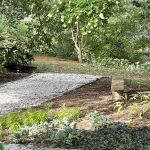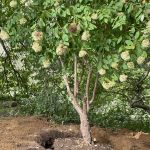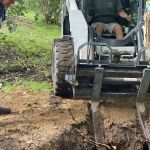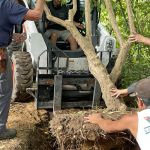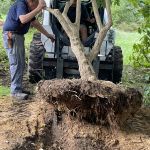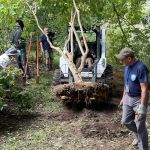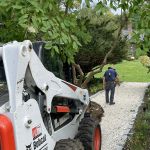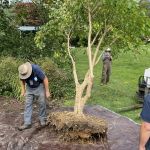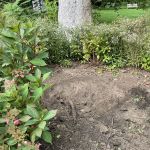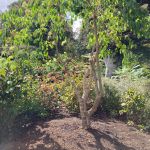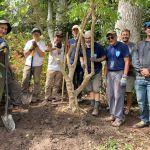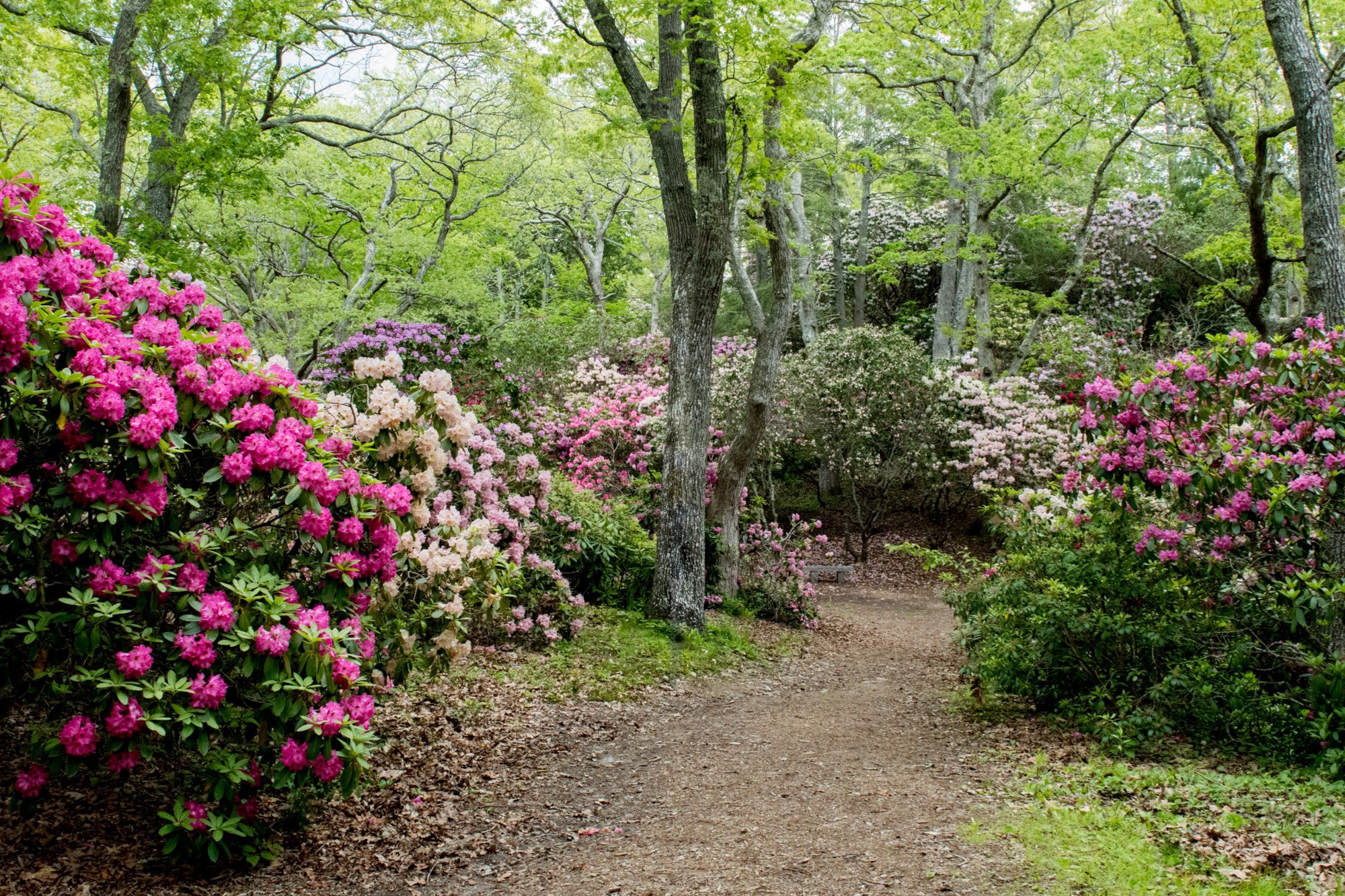Moving a Large Hydrangea – Relocating an Ancient PeeGee Standard at Heritage
A couple of years ago I ‘rediscovered’ two very old Hydrangea paniculata ‘Grandiflora’ tree-form plants on the slope of the Arbor Bowl at Heritage. Both specimens have accession tags indicating their presence at the time of the Lilly acquisition of the property in 1969. However, having devoted a fair bit of time to this cultivar form over many years, it is clear to me that the actual planting occurred at least several years before that date. Our best guess is these ancient specimens are at least 60 to 65 years old and likely the very first hydrangeas ever planted on the property – possibly even by Charles Dexter prior to his death in 1943.
Both of these particular plants have resided in significant shade for many years. The site was likely quite open and provided plenty of desired sunlight at the time of planting. Growth was obviously strong, and the plants prospered. Surrounding vegetation also grew well; shade cover expanded substantially, and the area in the Arbor Bowl became increasingly isolated. Growth of these PeeGees became totally free-form and almost indistinguishable. In recent years, landscape maintenance has been re-established in this area, and I began to prune the plants in modest fashion a few years ago. Overall plant form improved considerably but flowering has remained very minimal owing to the dense shade.
I discussed the possibility of relocating one of the plants with Les Lutz – our Director of Horticulture – and we concluded it was a worthy project. Conveniently, we had an excellent site available, offering plenty of sunshine and visibility at the bottom west side of the Grand Staircase in the North American Hydrangea Test Garden. Relocating any plant of this age carries substantial risk and timing would be critical. Given our current trend of dry summers on the Cape, early autumn was our best choice for giving the plants a good start in their new location.
Along those same lines, we chose to extract as large a root ball as possible, in order to give these ancient plants a good chance of survival, and began to trench dig around the tree-form base in mid-September, after receiving our first significant rainfall since late June. This digging technique is a preferred method for serious plant removal and reclamation. A 6-foot diameter, shovel wide trench was dug around the base of the plant, to a depth of 20 to 24 inches. Some roots were severed in the process, but most of the root zone was contained. Using simple garden hoes, we then scraped/extracted soil under the retained root zone to assist separation. Root zone depth was comparatively modest – approximately 12 to 15 inches. Given the clay rich composition of the soil, the weight of the root ‘ball’ was substantial, and our BobCat was employed to extract and transport our treasure.
On September 22 we made the ‘big move’ and the following photo sequence below provides good detail of the event.
As has become our practice at Heritage, we immediately installed surface / drip irrigation around the base of the Ancient PeeGee. The total immediate area has been finish graded, nicely mulched, and ready for winter. We’ve said a few prayers too!
Autumn weather to date has been excellent and our Ancient PeeGee seems to be acclimating very nicely. There has been no leaf drop and recent rains have consolidated the immediate site in good fashion. October is a great month as the days shorten and air temperatures slowly decline – a perfect transition for our deciduous hydrangea genus. Above-ground plant growth has virtually ended for this season. But root expansion/densification continues until soil temperatures drop below 50 degrees, which is typically delayed until early December.
Perhaps ‘Best of All,’ this was a significant project undertaken by our great volunteer team – the Diggermen. The Heritage Horticulture Staff also provided extra assistance during the ‘move’ event.
So far, so very good! I hope you’ll send some good karma out to our plant and, with any luck, you’ll be able to look for it next year when you visit!
-Mal Condon, Curator of Hydrangeas, Heritage Museums & Gardens
- As you drop down the stepped path into the Cape Cod Hydrangea Society Display Garden, our ‘Ancient PeeGee’ was located slightly to the right and in the background, as shown in this photo.
- This photo shows the completed hand-dug trench around the base of the plant.
- Our Bobcat is positioned so the lifting forks can slide under the root mass and extract the totally intact root ball.
- Here, the Bobcat has lifted the root ball ‘free’ from the ground.
- Our ‘Prize’ is now away from its origin and soon to begin the ‘journey’ to a new and better location.
- This photos show the plant’s journey to its new location.
- Still going!
- This shows us readying the tarp to receive the plant at its new location.
- Our ‘Prize’ on the Pull Tarp – ready for pulling into it’s new home.
- Showing the sizeable planting hole that was pre-prepared to receive the sizeable root ball.
- Our ‘Ancient PeeGee’ – well planted, mulched, irrigated, and prayed for!
- Bennett Ojserkis – Diggermen Team, Paul Keohan – Diggermen Team, Andrew Bourque – Hort Team, Bill Cohen – Diggermen Team, Rick Murray – Diggermen Team, Barry Guryan – Diggermen Team, Brian Razzano – Hort Team, Brendan Russo – Hort Team


